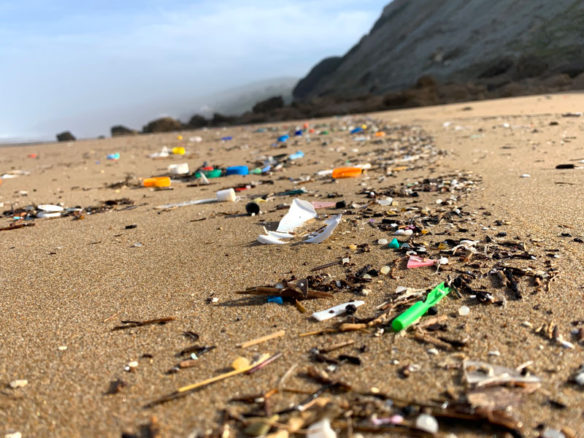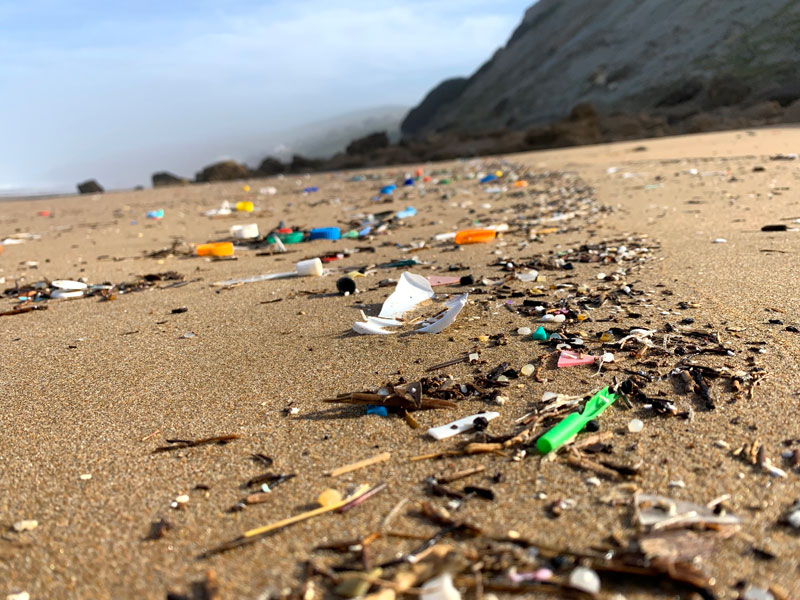
“The unprecedented plastic waste tide plaguing our oceans and shores, can become as limited as our chosen relationship with plastics, which involves a dramatic behavioral change on our part…”
Captions and Photo: © SAF — Coastal Care
Excerpts;
In the last decade, beach cleanups have grown into a global phenomenon, with volunteers gathering at regular intervals for the Sisyphean task of cleaning up plastic trash. Now, new research on a remote Australian island chain suggests that beach cleanups can inadvertently mask the full scale of plastic pollution, much of which lies below the sand’s surface…
Read Full Article; National Geographic (05-16-2019)
Plastic pollution: Flip-flop tide engulfs ‘paradise’ island; BBC News (05-16-2019)
Scientists estimated that the beaches of Australia’s Cocos (Keeling) Islands are strewn with around 414 million pieces of plastic pollution.Nearly half the plastic manufactured since the product was developed six decades ago has been made in the past 13 years, say scientists…
Microplastic pollution revealed ‘absolutely everywhere’ by new research; Guardian UK (03-06-2019)
Microplastic pollution spans the world, according to new studies. Humans are known to consume the tiny plastic particles via food and water, but the possible health effects on people and ecosystems have yet to be determined…
Microplastic pollution in oceans is far worse than feared, say scientists; Guardian UK (03-12-2018)
Microplastics pollute most remote and uncharted areas of the ocean; Guardian UK (02-12-2018)
First data ever gathered from extremely remote area of the South Indian Ocean has a surprisingly high volume of plastic particles, say scientists. Currently scientists can only account for 1% of the plastic they think is in the ocean…
Video captures moment plastic enters food chain, BBC News (03-11-2017)
A scientist has filmed the moment plastic microfibre is ingested by plankton, illustrating how the material is affecting life beneath the waves. The footage shows one way that plastic waste could be entering the marine and global food chain…
People may be breathing in microplastics, health expert warns; Guardian UK (05-10-2016)
People could be breathing in microparticles of plastic, according to a leading environmental health expert, with as yet unknown consequences on health…
Sea salt around the world is contaminated by plastic, studies show; Guardian UK (09-08-2017)
New studies find microplastics in salt from the US, Europe and China, adding to evidence that plastic pollution is pervasive in the environment…
These 10 companies are flooding the planet with throwaway plastic; Greenpeace (10-09-2018)
Nine months, six continents, 239 cleanup events, and more than 187,000 pieces of trash later, we now have the most comprehensive snapshot to date of how corporations are contributing to the global plastic pollution problem…
Plastic pollution: When The Mermaids Cry: The Great Plastic Tide, Coastal Care
Plastic is versatile, lightweight, flexible, moisture resistant, strong, and relatively inexpensive. Those are the attractive qualities that lead us, around the world, to such a voracious appetite and over-consumption of plastic goods. However, durable and very slow to degrade, plastic materials that are used in the production of so many products all, ultimately, become waste with staying power. Our tremendous attraction to plastic, coupled with an undeniable behavioral propensity of increasingly over-consuming, discarding, littering and thus polluting, has become a combination of lethal nature…









